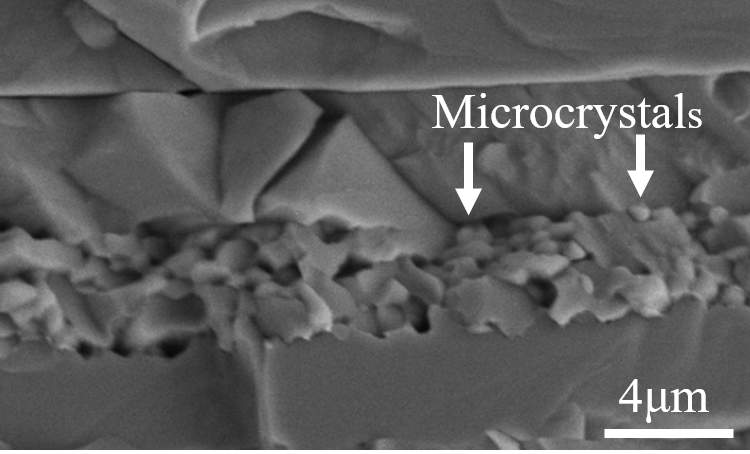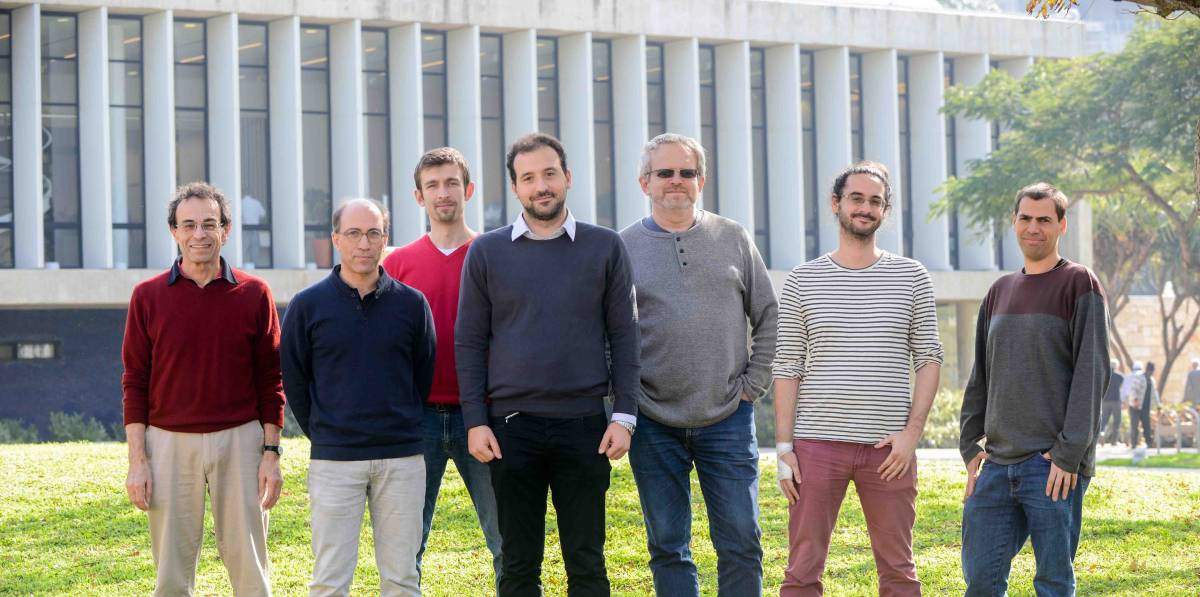Are you a journalist? Please sign up here for our press releases
Subscribe to our monthly newsletter:

Clever materials are needed for producing, converting and storing energy in sustainable ways. And what could be cleverer than materials that repair themselves? Researchers at the Weizmann Institute of Science have now proved that such self-healing occurs inside halide perovskites, materials that hold great promise for the future of solar energy. The findings, reported recently in Advanced Materials, could not only advance the use of halide perovskites, but help identify other self-healing materials for the manufacture of electronic devices.
The extraordinary performance of halide perovskites has puzzled scientists. These soft semiconductors can be produced at room temperature by mixing together solutions of two salts and drying them – a simple process that would be expected to produce numerous defects. Yet halide perovskites convert solar energy to electrical power so efficiently it is as if they were all but defect-free. One possible explanation has been that these materials could undergo the spontaneous self-healing of defects. Some two decades ago, Prof. David Cahen of Weizmann’s Materials and Interfaces Department, together with Leeor Kronik − then a postdoctoral fellow and now a professor in the same department − and other colleagues had discovered self-healing in a previous generation of solar energy materials. Their finding suggested that the phenomenon may exist in additional material types; in the present study, they investigated whether halide perovskites were another example. “While trying to explain the efficiency of halide perovskites, we proposed that after the crystals form, they might keep on self-organizing and repairing their own defects,” Cahen says.

The major challenge in proving that halide perovskites are capable of self-healing was to intentionally create damage inside the crystals − but not on the material’s surface, where interactions with the environment can obscure processes intrinsic to the material itself. Regular methods for damaging a material in its interior would inevitably damage its surface as well. Postdoctoral fellow Dr. Davide Raffaele Ceratti, working with Cahen and departmental colleague Prof. Gary Hodes, came up with an ingenious solution for creating an event that would occur only inside the material. He chose a halide perovskite that allows near-infrared light to pass through but absorbs the more energetic blue light. In the experiment, the researchers focused an intense red laser beam on a spot nearly a micron in diameter, at a depth of about 100 microns inside a crystal. They used a technology known as two-photon absorption, which causes two near-infrared photons to be simultaneously absorbed by a material, which then behaves roughly as if it had absorbed a photon with double energy − that is, a blue photon. “We adjusted the power of the laser so that the equivalent of blue light created at the focal point had about the same intensity as sunlight,” Ceratti explains. “Since blue light is absorbed by the material, it can inflict damage inside the crystal around its focal point, but not elsewhere.”
After the crystals form, they might keep on self-organizing and repairing their own defects
Using a particularly sensitive optical microscope, the researchers then monitored the damage inside the crystal by tracking its luminescence. When exposed to intense light, undamaged areas of the crystal became luminescent in a way typical of this material, but the damaged area remained darker. Then, after a period of time lasting several minutes to several hours, the material completely recovered its luminescence. When the researchers examined it under an electron microscope, they saw that its internal structure did not appear to be different from that of the original crystal.
Remarkably, even when an extremely intense beam – with energies hundreds of times that of sunlight – was used to produce the damage − causing an area inside the crystal to be completely destroyed − the material partially regenerated itself at the damaged spot by forming a layer of microcrystals. The researchers hypothesized that the beam had caused part of the damaged material to be degraded into components that later reacted among themselves to reform the original chemical compounds.
An accelerated video showing that damage (dark spot) inside a halide perovskite nanocrystal disappears as the material heals itself
That is, self-healing had taken place. This explanation was supported by chemical experiments performed separately in the lab.
“Halide perovskite crystals are held together by relatively weak atomic bonds, which break down easily but can also be restored with relative ease,” Cahen explains.
Self-healing may come in particularly handy for offsetting the gradual degradation that occurs in solar cells over time. “Solar cells made of halide perovskites might sustain a certain amount of damage when the sun shines, but our results suggest that they may heal themselves once darkness falls,” Cahen says. The study’s results may lead to ways of rendering halide perovskites more resilient and longer-lasting, for use in solar panels and in key components of other optical and electronic devices of the future. No less important, the findings may advance the search for additional self-healing materials that might be used in sustainable energy and other electronic technologies. These possibilities will be explored in the Minerva Center on Self-Repairing Systems for Energy and Sustainability, which was recently established at the Weizmann Institute of Science.
The research team also included students Yevgeny Rakita of the Materials and Interfaces Department and Ron Tenne of the Physics of Complex Systems Department, staff scientist Dr. Vyacheslav Kalchenko of the Veterinary Resources Department, Prof. Michael Elbaum of the Chemical and Biological Physics Department and Prof. Dan Oron of the Physics of Complex Systems Department – all of the Weizmann Institute of Science – and, from the University of Milan, Italy, Llorenç Cremonesi and Prof. Marco Potenza.
Prof. David Cahen's research is supproted by the Leona M. and Harry B. Helmsley Charitable Trust; Dana and Yossie Hollander; the Wolfson Family Charitable Trust; the Ben B. and Joyce E. Eisenberg Foundation Endowment Fund; the Harold L. Perlman Family Foundation; the Ullmann Family Foundation; the estate of Stanley I. Batkin; and the Weizmann Institute of Science Sustainability and Energy Research Initiative (SAERI). Prof. Cahen is the incumbent of the Rowland and Sylvia Schaefer Professorial Chair in Energy Research.